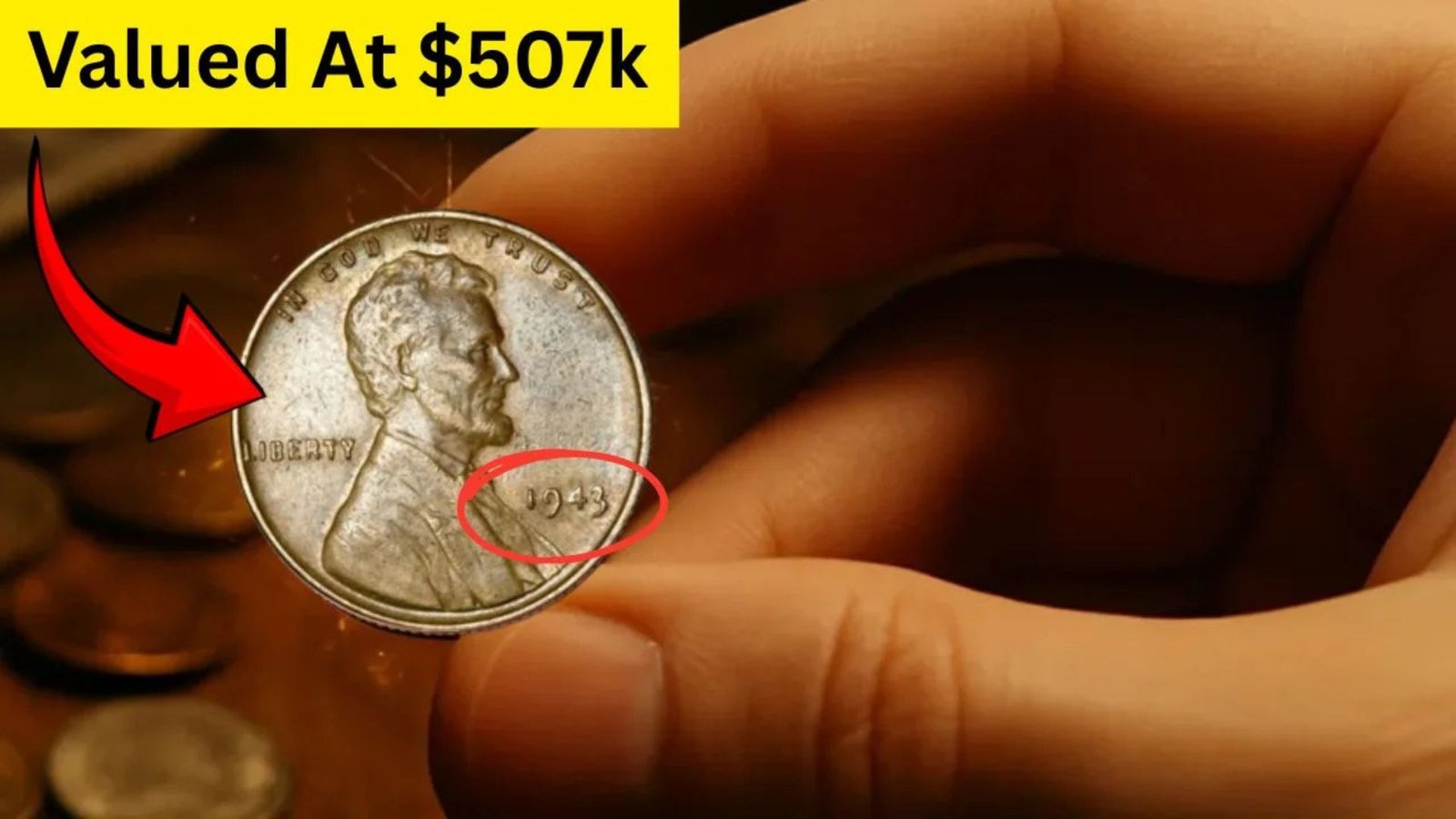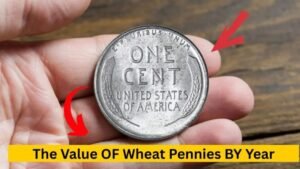Have you ever checked your pocket change and wondered if you’re holding a hidden treasure? The Lincoln Wheat Penny, a small coin minted from 1909 to 1958, might just be that treasure. While most of these pennies are worth only a cent or two, some rare versions could be valued at $507,000 or more! Even better, these valuable coins might still be hiding in your change jar, wallet, or even loose change at the store. Let’s dive into the exciting world of coin collecting and uncover the secrets of the rarest Lincoln Wheat Penny, why it’s so valuable, and how you can spot one.
What Is the Lincoln Wheat Penny?
The Lincoln Wheat Penny is a famous U.S. coin produced by the U.S. Mint from 1909 to 1958. It was created to honor President Abraham Lincoln’s 100th birthday. The front of the coin (called the obverse) shows Lincoln’s portrait, while the back (reverse) features two wheat stalks, symbolizing prosperity. This design, crafted by Victor David Brenner, made it the first U.S. coin to feature a real historical figure.
Most Lincoln Wheat Pennies are common and worth only a few cents. However, certain rare versions, due to minting mistakes or limited production, can fetch thousands or even hundreds of thousands of dollars at auctions. The possibility that one of these coins is still in circulation makes checking your change an exciting treasure hunt!
Why Are Some Lincoln Wheat Pennies So Valuable?
The value of a Lincoln Wheat Penny depends on three main factors: rarity, condition, and historical significance. Let’s break it down:
Rarity
Some pennies were made in very small numbers, often due to errors during production. For example, the 1943 Copper Penny is one of the rarest because most pennies that year were made of steel to save copper for World War II. Only a few copper pennies were accidentally made, making them extremely rare.
Condition
A coin’s condition, or how well-preserved it is, greatly affects its value. Coins in “mint” condition (almost perfect, with no scratches or wear) are worth much more than worn-out ones. Professional grading services like PCGS or NGC evaluate coins to determine their condition.
Historical Significance
Coins with unique stories, like those tied to historical events or minting errors, attract collectors. Errors like double printing (doubled die) or missing mint marks make a penny stand out, driving up its value.
The $507,000 Lincoln Wheat Penny: The 1943 Copper Penny
The star of rare Lincoln Wheat Pennies is the 1943 Copper Penny, often valued at $507,000 or more. During World War II, the U.S. Mint switched to making pennies from steel to save copper for war supplies like bullets. However, a small number of copper pennies were mistakenly struck in 1943, likely because leftover copper blanks from 1942 were used. Only about 40 of these coins are known to exist, making them a collector’s dream.
One famous example sold for $1.7 million in 2010, and experts believe a perfect specimen, especially from the Denver Mint (marked with a “D” under the year), could fetch $507,000 or more today. The rarity and historical significance of this coin make it one of the most sought-after in the world.
Other Valuable Lincoln Wheat Pennies
While the 1943 Copper Penny is the most famous, other Lincoln Wheat Pennies can also be worth a lot. Here are some to look for:
- 1909-S VDB: This was the first year of the Lincoln Wheat Penny, and the “VDB” refers to the designer’s initials (Victor David Brenner) on the back. Only a few were made at the San Francisco Mint (marked with an “S”), and they can be worth thousands.
- 1914-D: A low-mintage coin from the Denver Mint, valued for its rarity.
- 1922 No D: A rare error where the Denver Mint mark (“D”) is missing, making it highly valuable.
- 1955 Doubled Die: A minting error where the date and words appear doubled, increasing its value significantly.
How to Spot a Rare Lincoln Wheat Penny
Could you have a $507,000 penny in your pocket? Here’s how to check:
Step 1: Look at the Date and Mint Mark
Check the year on the penny. Key dates like 1909-S VDB, 1914-D, 1922 No D, 1943 (copper), and 1955 (doubled die) are the ones to watch. Also, look for a mint mark—a small letter under the year. “S” stands for San Francisco, “D” for Denver, and no letter means Philadelphia. Mint marks can affect value.
Step 2: Do the Magnet Test
For 1943 pennies, use a magnet. Steel pennies from 1943 will stick to a magnet, but a copper penny won’t. This is a quick way to spot a potential 1943 Copper Penny.
Step 3: Check the Weight
A copper penny weighs about 3.11 grams, while a steel penny weighs 2.7 grams. Use a small scale to check the weight if you suspect you have a rare coin.
Step 4: Look for Errors
Examine the coin for minting errors like doubled text (doubled die), misaligned printing, or missing mint marks. These errors can make a penny much more valuable.
Step 5: Get It Checked by a Professional
If you think you’ve found a rare penny, don’t clean it! Cleaning can lower its value. Instead, take it to a certified numismatist or grading service like PCGS or NGC for verification.
Where Might You Find a Rare Lincoln Wheat Penny?
The exciting part is that rare Lincoln Wheat Pennies could still be in circulation! Since billions of these coins were made, some rare ones might be hiding in:
- Pocket Change: Check your change from stores, vending machines, or gas stations.
- Coin Jars: Old jars of coins at home might hold a valuable penny.
- Estate Sales or Flea Markets: People often sell old coin collections without knowing their value.
- Inherited Collections: Family coin stashes could contain rare finds.
In 2019, a 1943 Copper Penny was found in a family’s coin collection and sold for over $200,000, proving these treasures can still turn up!
Table: Top 5 Valuable Lincoln Wheat Pennies
| Year | Key Feature | Estimated Value | Why It’s Valuable |
|---|---|---|---|
| 1943 | Copper Penny | Up to $507,000+ | Minting error; only ~40 exist |
| 1909-S VDB | Designer’s Initials | $1,000–$100,000 | Low mintage, first year |
| 1914-D | Denver Mint | $500–$10,000 | Low mintage |
| 1922 No D | Missing Mint Mark | $1,000–$50,000 | Minting error |
| 1955 | Doubled Die | $500–$25,000 | Visible doubling error |
How to Sell a Valuable Lincoln Wheat Penny
If you find a rare penny, here’s how to sell it:
- Get It Graded: Professional grading services like PCGS or NGC will certify its authenticity and condition, increasing its value.
- Contact Coin Dealers: Work with certified numismatic dealers who specialize in rare coins.
- Auction It: Major auction houses like Heritage Auctions, Stack’s Bowers, or GreatCollections can help you sell to collectors.
- Avoid Scams: Be cautious of buyers offering low prices or claiming your coin is fake without proof.
FAQ: Common Questions About the $507,000 Lincoln Wheat Penny
Q: Is the $507,000 Lincoln Wheat Penny really still in circulation?
A: Yes, it’s possible! While rare, coins like the 1943 Copper Penny have been found in pocket change, coin jars, and old collections as recently as 2019.
Q: How do I know if my penny is the rare 1943 Copper Penny?
A: Check the date (1943) and do the magnet test. If it doesn’t stick to a magnet and weighs 3.11 grams, it could be copper. Get it verified by a professional.
Q: Can cleaning my penny increase its value?
A: No! Cleaning can damage the coin and lower its value. Keep it as is and have it graded by experts.
Q: Where can I sell a valuable penny?
A: Sell through reputable auction houses like Heritage Auctions or certified coin dealers. Always get it graded first.
Q: Are there other valuable Lincoln Wheat Pennies besides the 1943 Copper Penny?
A: Yes, coins like the 1909-S VDB, 1914-D, 1922 No D, and 1955 Doubled Die can be worth thousands.
Conclusion: Start Your Treasure Hunt Today!
The Lincoln Wheat Penny valued at $507,000 is more than just a coin—it’s a piece of history that could be hiding in your pocket. The 1943 Copper Penny and other rare versions spark excitement among collectors and casual treasure hunters alike. By checking your change, coin jars, or old collections, you might uncover a fortune. Remember to look for key dates, mint marks, and errors, and always get a professional opinion before selling. So, the next time you get change at the store, take a closer look—that penny might just change your life!




